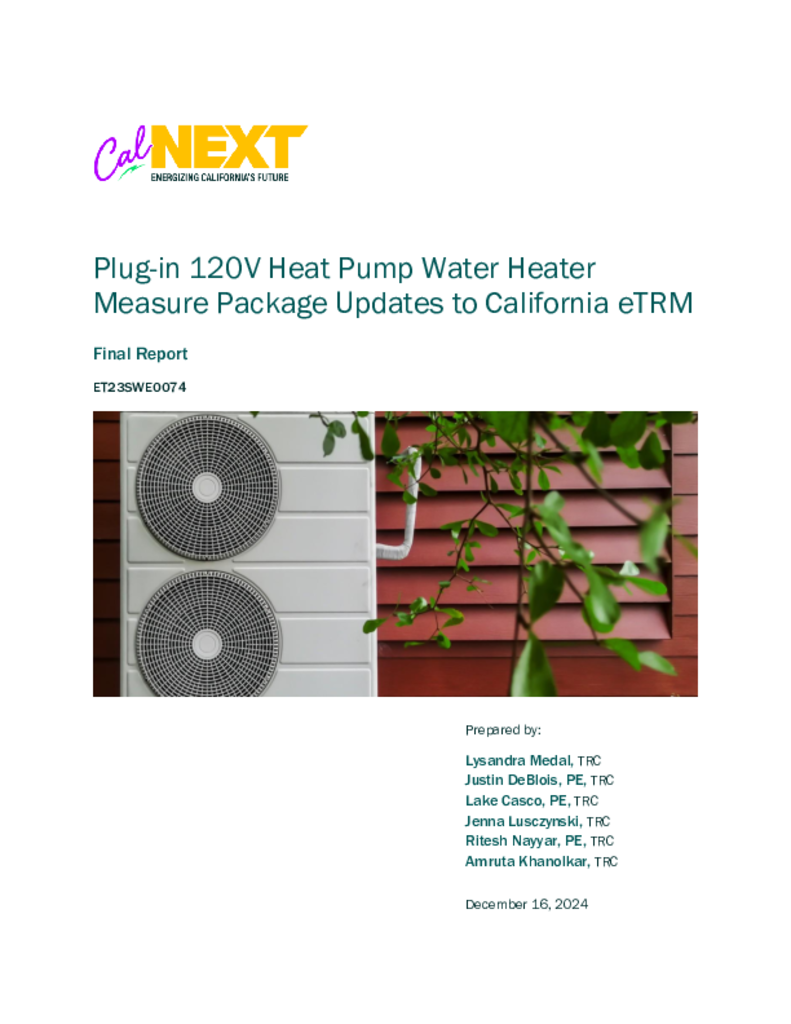ET23SWE0074 - Plug-in 120V HPWH Measure Package Updates to eTRM
The proposed idea is to provide recommendations for updates around adding plug-in 120-volt heat pump water heaters (HPWHs) for inclusion into existing residential HPWH related eTRM measure packages.
The 120-volt HPWHs are market-ready and proven to be important new offerings. It is estimated that 90% of water heating replacements occur on an emergency basis. Without easy, fast and affordable replacement solution homeowners are likely to opt for replacement with gas/propane water heaters. The low-power design can plug into existing wall outlets without expensive electrical panel upgrades and/or home rewiring often required for gas WH replacements. The recent California-wide field study observed an average monthly energy consumption savings of approximately 85% in comparison to the pre-existing gas/propane water heater when normalized to kWh. The new electrification measure will allow space and power constraints households to decarbonize and help CA meet its’ 6 million heat pump installation goal.
The current HPWH e-TRMs have UEF requirements for eligibility. Since the 120-volt HPWH has a smaller compressor size, the UEF for majority of the tank sizes are lower than the eligibility criteria. However, since they do not have inefficient electric resistance element on them (or have smaller size element), they are expected to save more energy. The primary goal of this project is to research and document ways to reduce UEF cap requirements or add additional savings for this new class of solution.
The research questions are:
1. What are the current residential HPWH TRM requirements for eligible HPWHs? Do the different 120-volt products meet the requirements?
2. What are the current minimum code requirements for UEFs?
3. Can the current UEF requirements for 120-volt HPWHs be reduced, or can additional savings be achieved by updating the Energy Plus calculator?
4. Can caps for product types, building types, market sectors be added?
The project team will also document and installation first costs and look at technical feasibility and practical considerations of the technology.
This research highlights the energy and cost-saving potential of 120V plug-in heat pump water heaters (HPWHs), emphasizing their flexibility and reduced need for electrical infrastructure upgrades. These systems, with a UEF of 2.6 or higher, provide a cost-effective and easily deployable solution for residential water heating, addressing a critical market gap. Key eligibility considerations have been identified to ensure effective implementation and maximize savings through updates to SWWH025 (Residential Heat Pump Water Heater for fuel substitution) and SWWH014 (Heat Pump Water Heater, Residential) measure packages. Recommendations include integrating these systems into the California Electronic Technical Reference Manual (eTRM) to support utilities in targeting hard-to-reach and disadvantaged communities. Innovative approaches, such as fixed-cost, same-day emergency replacement programs, are proposed to enhance deployment and savings.

